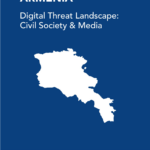
Armenia Digital Threat Landscape: Civil Society & Media
This report was prepared by Internews’ Internet Freedom & Resilience team under a stream of work that strengthens civil society organizations, journalists, and other human rights defenders’ ability to detect, analyze, and build resilience to digital attacks through localized expertise in threat analysis and incident response.
It is intended to provide an overview of the digital threats faced by civil society and media organizations in Armenia and provide guidance for digital safety experts supporting this community.
This report was written in close collaboration with CyberHub-AM, a Computer Emergency Response Team (CERT) for Armenian civil society, including NGOs, Human Rights Defenders, Activists, journalists, and independent media. They serve as a contact point and help desk for the above-mentioned groups in Armenia and collect, analyze, and anonymously and responsibly share incident data and indicators with the global threat intelligence community where appropriate.
Download Report
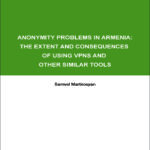
Anonymity Problems in Armenia: The Extent And Consequences of Using VPNs And Other Similar Tools
In the Republic of Armenia, there is no continuous and extensive demand for anonymity tools to bypass blocking such as VPN and TOR. However, the occasional escalation of domestic political struggle and the short-term but periodic blockings of the Internet contribute to a growing interest in these tools.
Despite anonymity, there is no ban on such tools in the country, which are not even regulated by law. At the same time, there have been cases when citizens have been prosecuted for using VPNs.
Download PDF version.
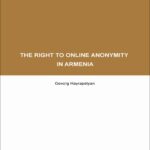
The Right to Online Anonymity in Armenia
Online anonymity is a guarantee of freedom of expression in the digital age. Without anonymity, people are less likely to express themselves freely, for fear of reprisal. This can have a chilling effect on free speech, especially in countries where freedom of expression is already restricted.
Media Diversity Institute has developed a policy brief entitled — “The Right to Online Anonymity in Armenia,” which examines the legal regulations of online anonymity in Armenia. The report finds that the current regulations are inadequate and do not adequately protect the right to online anonymity. The report makes a number of recommendations for improving the legal framework for online anonymity in Armenia.
The report is intended for a wide range of audiences, including the media, human rights defenders, industry experts, state administration bodies, and legislators. The report is available in PDF format at this link.
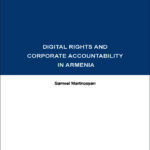
Digital Rights And Corporate Accountability in Armenia
This research uses Ranking Digital Rights (RDR) Index Methodology to assess how Armenia’s three telecom operators (Viva-MTS, Team Telecom, and Ucom) collect, store, process, and share users’ data with third parties and government agencies.
The research finds that all three companies provide similar documents to inform their customers, yet they do not provide enough details about how they use and share users’ data with third parties or government agencies.
Download PDF version

Digital Security Incidents against the Armenian Civil Society in 2019 – 2020
This research aims to present the general trends in digital security and targeted cyberattacks against the Armenia civil society over the past two years, to take an in-depth look at some of the most prominent incidents and thus help the civil society better prepare for the future.
The data for this research was collected via the CyberHUB-AM digital support helpdesk, established by the Media Diversity Institute – Armenia in 2019.
Download PDF version

Armenian Government’s Handling of The Infodemic
Following the 2018 “Velvet revolution” a populist force led by former journalist Nikol Pashinyan, came to power in Armenia pledging to solve the county’s long-standing problems of undemocratic governance, systemic corruption, opaque policymaking, flawed electoral system. Pashinyan’s early steps had a mixed record. Notable progress was observed in the country’s democratization, freedom of expression, internet freedom and government transparency indicators. However, there were legitimate concerns about hostile rhetoric toward the media from government officials, including Pashinian himself, as well as the increased number of court cases brought against the Armenian media. It is against this backdrop that the COVID-19 pandemic and the related Infodemic struck Armenia in March, 2020.
Download PDF version

Understanding digital rights and their importance in the information society
Download PDF version
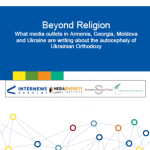
Beyond Religion: What media outlets in Armenia, Georgia, Moldova and Ukraine say about the autocephaly of Ukrainian Orthodoxy
Download PDF version
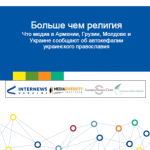
Больше чем религия: Что медиа в Армении, Грузии, Молдове и Украине сообщают об автокефалии украинского православия
Загрузить PDF версию.

2016 Mapping the Online Media Market in Armenia Report
Download PDF version.

2015 Mapping the Online Media Market in Armenia Report
Download PDF version.

Media Coverage of Minority Groups in the South Caucasus 2004 – 2006
Download PDF version.
